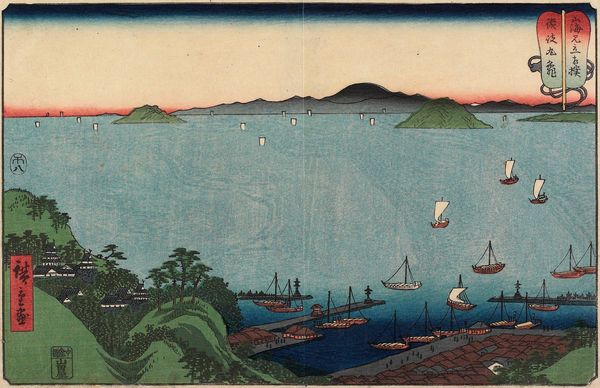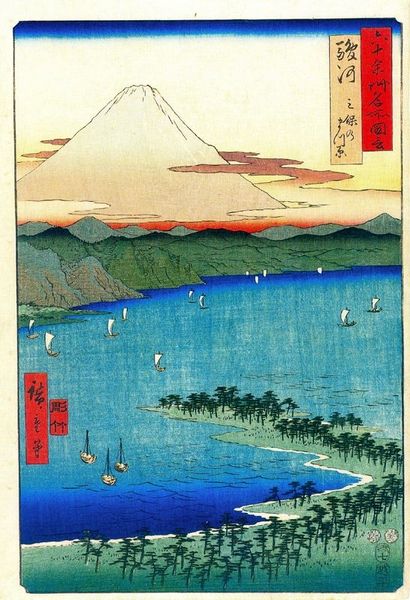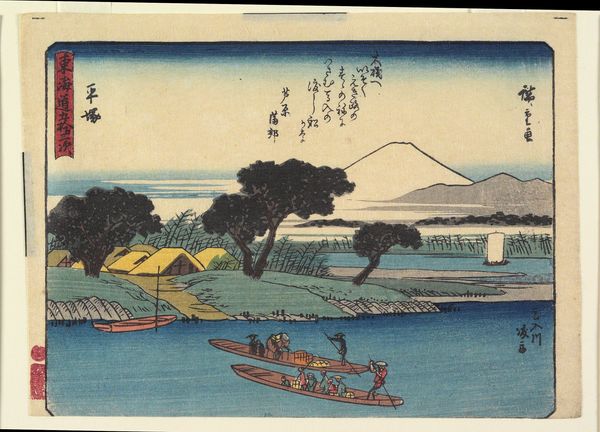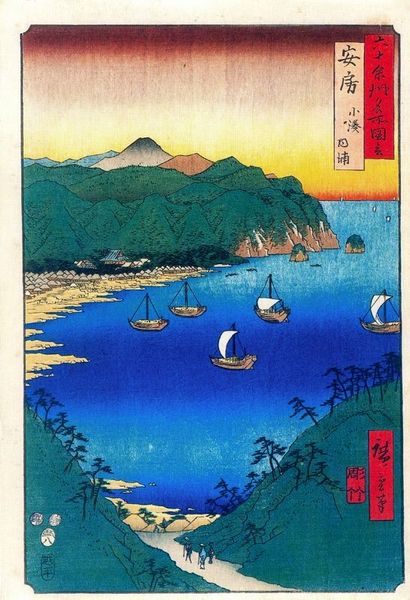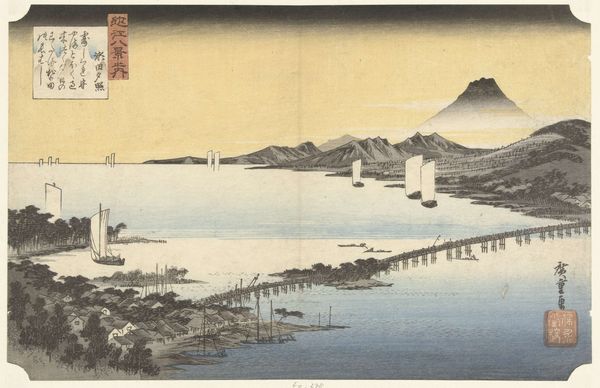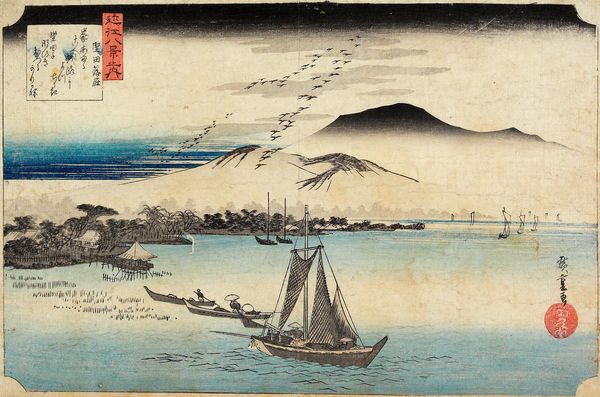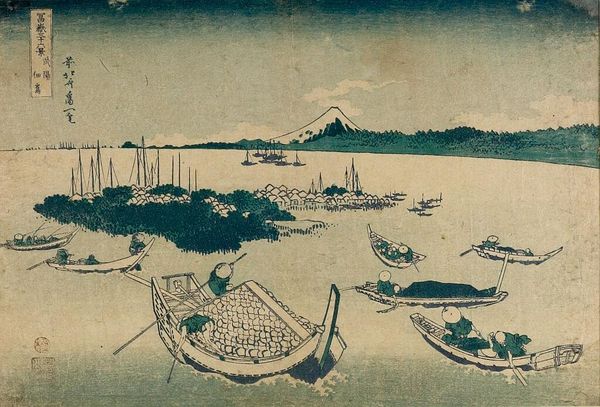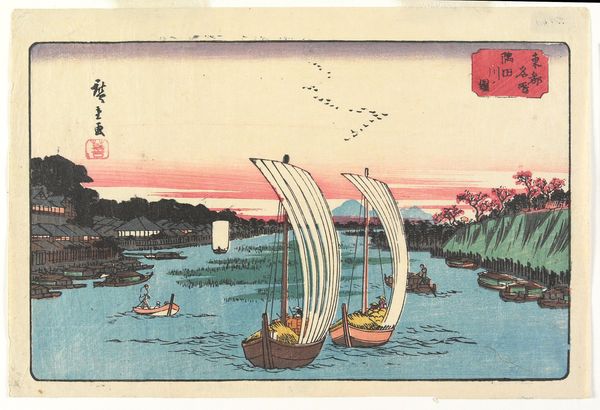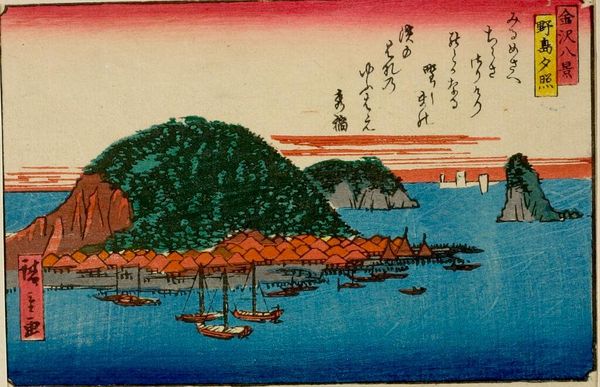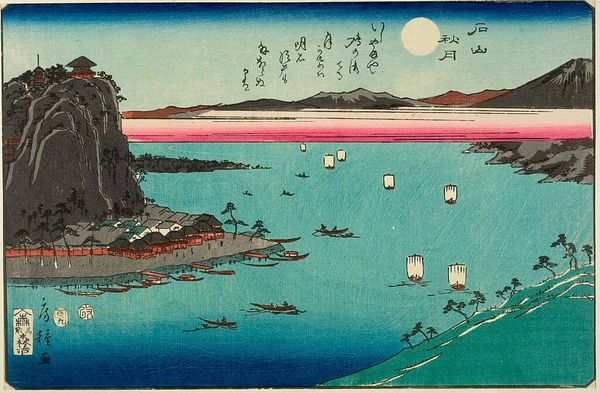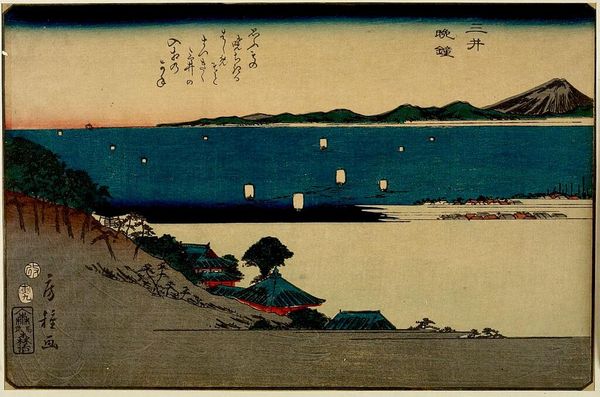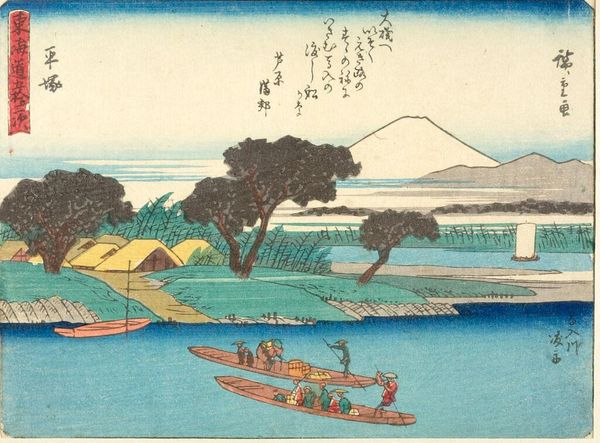
painting, print, watercolor, woodcut
#
water colours
#
painting
# print
#
asian-art
#
landscape
#
ukiyo-e
#
watercolor
#
coloured pencil
#
woodcut
#
orientalism
#
traditional art medium
#
line
Copyright: Public domain
Curator: Here we have "Descending Geese, Katata," a work attributed to Utagawa Hiroshige. It’s an example of Ukiyo-e, or "pictures of the floating world," made through woodblock printing. Editor: Oh, the vast, quiet blue pulls me right in! There's something melancholy but also expansive about it. The composition is just mesmerizing, with that striking flock of birds leading the eye. Curator: Indeed, the arrangement is carefully planned to evoke a sense of distance and journey. Consider how the geese create a link between the earth and the sky. The location itself, Katata, was a significant site along the Tokaido road, heavily influencing Hiroshige’s landscape works. Editor: You know, those distant mountains… they feel almost dreamlike. I can imagine myself there, feeling both incredibly small and deeply connected to the vastness. Is that feeling related to 'floating world' concept? Curator: That’s certainly a strong connection to Ukiyo-e as a genre. Hiroshige captures not only the physical place, but a state of mind - ephemeral, beautiful, slightly sorrowful even. Consider, too, how the printing process itself – the layering of blocks and colours – adds to that delicate transience. Editor: And the boats! Tiny humans navigating these huge emotional landscapes, these tidal pulls. Makes me want to hop on the nearest sailboat and leave all the doom scrolling behind. The black looming at the top gives it this sense of urgency too...as if the dark is descending on this ideal. Curator: Yes, Ukiyo-e prints became widely popular in 19th century Japan with the rise of the merchant class and increased public demand for accessible art. What I think Hiroshige truly understands here is that interplay between culture, accessibility, and art's role for the masses. It's a perspective available only at this juncture in time. Editor: And so we keep floating on, through the prints, and time itself. Thanks, Hiroshige, for this pause button for the soul. Curator: A brilliant demonstration of art not just as object but a complex cultural exchange. A view of 19th Century Japan that touches the emotions of viewers from any place and time.
Comments
No comments
Be the first to comment and join the conversation on the ultimate creative platform.
